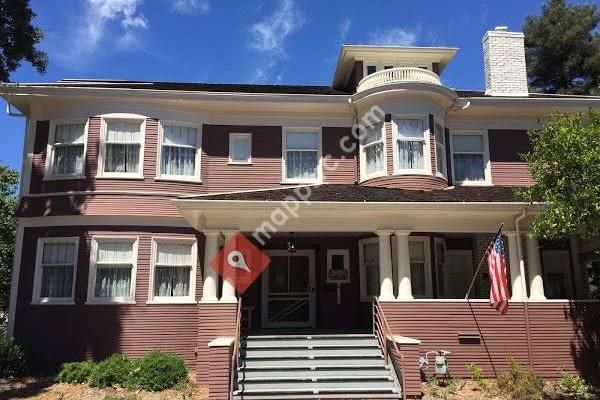



Shadelands Ranch was established by Hiram Penniman, an early American settler of California in 1856 as one of the first and largest farms in California's Ygnacio Valley.Penniman arrived in California in 1853 and three years later purchased 500acre of land from Encarnación Pacheco, daughter of Juana Sanchez de Pacheco, then owner of Rancho Arroyo de Las Nueces y Bolbones from which the 500acre were taken.Penniman planted a variety of fruit and nuts, including peaches, pears, apricots, grapes, almonds, and walnuts, as well as prunes, which served as Penniman's most important and most profitable crop. The original name of Penniman's ranch was "Shadelands Fruit Farm". Hiram Penniman fell ill in January 1897 and care and oversight of the ranch became largely the responsibility of Penniman's oldest daughter, Mary. The ranch fell on hard times with a drop in the price of crops and Mary had to depend on the charity of her sister Bessie's wealthy husband to take care of many of the ranch's financial concerns.When Hiram finally died, ownership of the ranch passed to Mary, then subsequently to Bessie after Mary's death. Bessie and her husband Albert Johnson mainly managed the ranch from afar, as Albert's business concerns lay mainly in distant Chicago. In 1921, Bessie hired Edmund Moyer to reside at the ranch with his family and supervise it. Bessie died in 1943 in a car accident, and not long after, Albert himself became severely ill. In 1947, with an eye to his own mortality, Albert Johnson formed the Gospel Foundation, an organization meant to oversee his extensive assets after his death. Johnson died in 1948 of cancer, and deeded all his property to the Gospel Foundation, including Shadelands.
 Lindsay Wildlife Experience
3 miles
Excellent place to bring kids for a "field trip". Even fun for adults. I had the oppo...
Lindsay Wildlife Experience
3 miles
Excellent place to bring kids for a "field trip". Even fun for adults. I had the oppo... Walnut Canyon National Monument
612 miles
A beautiful park to visit with the family. Nice that the trolley takes you through th...
Walnut Canyon National Monument
612 miles
A beautiful park to visit with the family. Nice that the trolley takes you through th... Walnut Creek Historical Museum
1436 miles
Walnut Creek Historical Museum
1436 miles
 Bobby Davis Museum
2106 miles
The history of Hazard, Perry Co. Kentucky all in one place. The exhibits and the staf...
Bobby Davis Museum
2106 miles
The history of Hazard, Perry Co. Kentucky all in one place. The exhibits and the staf... Columbia Crossing River Trails Center
2417 miles
This is a peaceful place to come and be by the water. If you come early you will see ...
Columbia Crossing River Trails Center
2417 miles
This is a peaceful place to come and be by the water. If you come early you will see ... The Museum of NCAAA
2662 miles
This museum is amazing. If you want to know the real, true roots of African Americans...
The Museum of NCAAA
2662 miles
This museum is amazing. If you want to know the real, true roots of African Americans...to add Shadelands Ranch Museum map to your website;
We use cookies and other tracking technologies to improve your browsing experience on our website, to show you personalized content and targeted ads, to analyze our website traffic, and to understand where our visitors are coming from. Privacy Policy